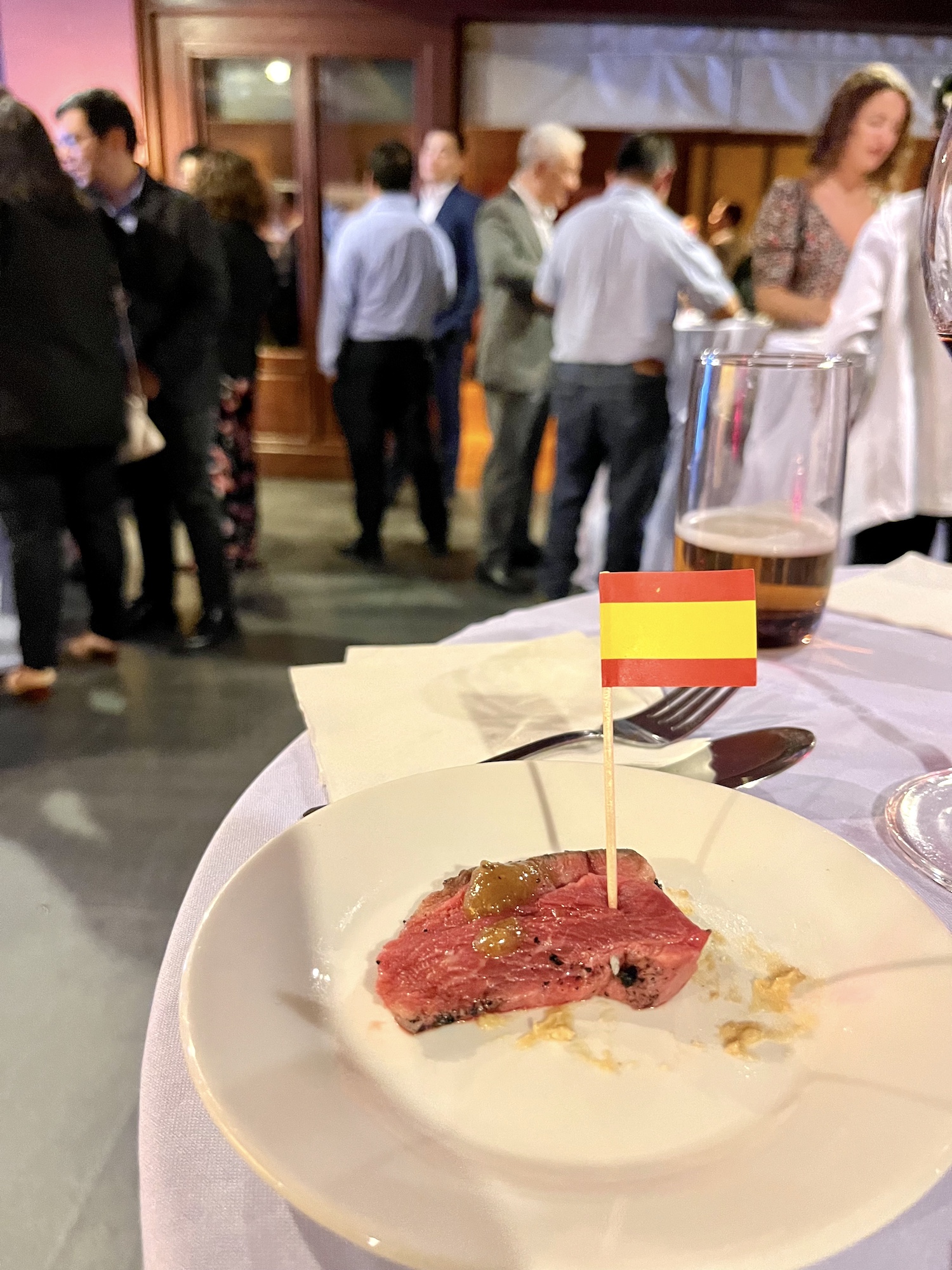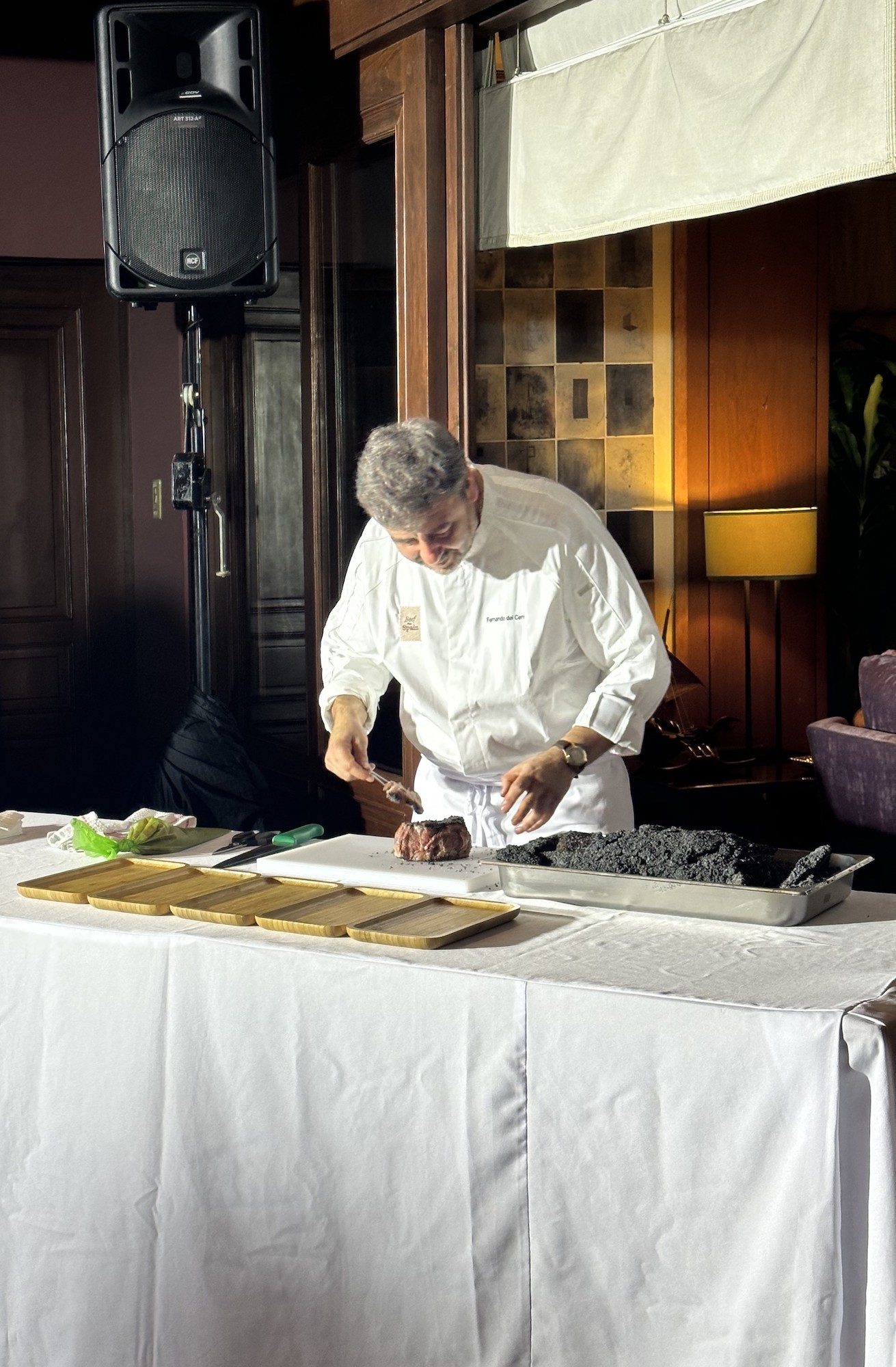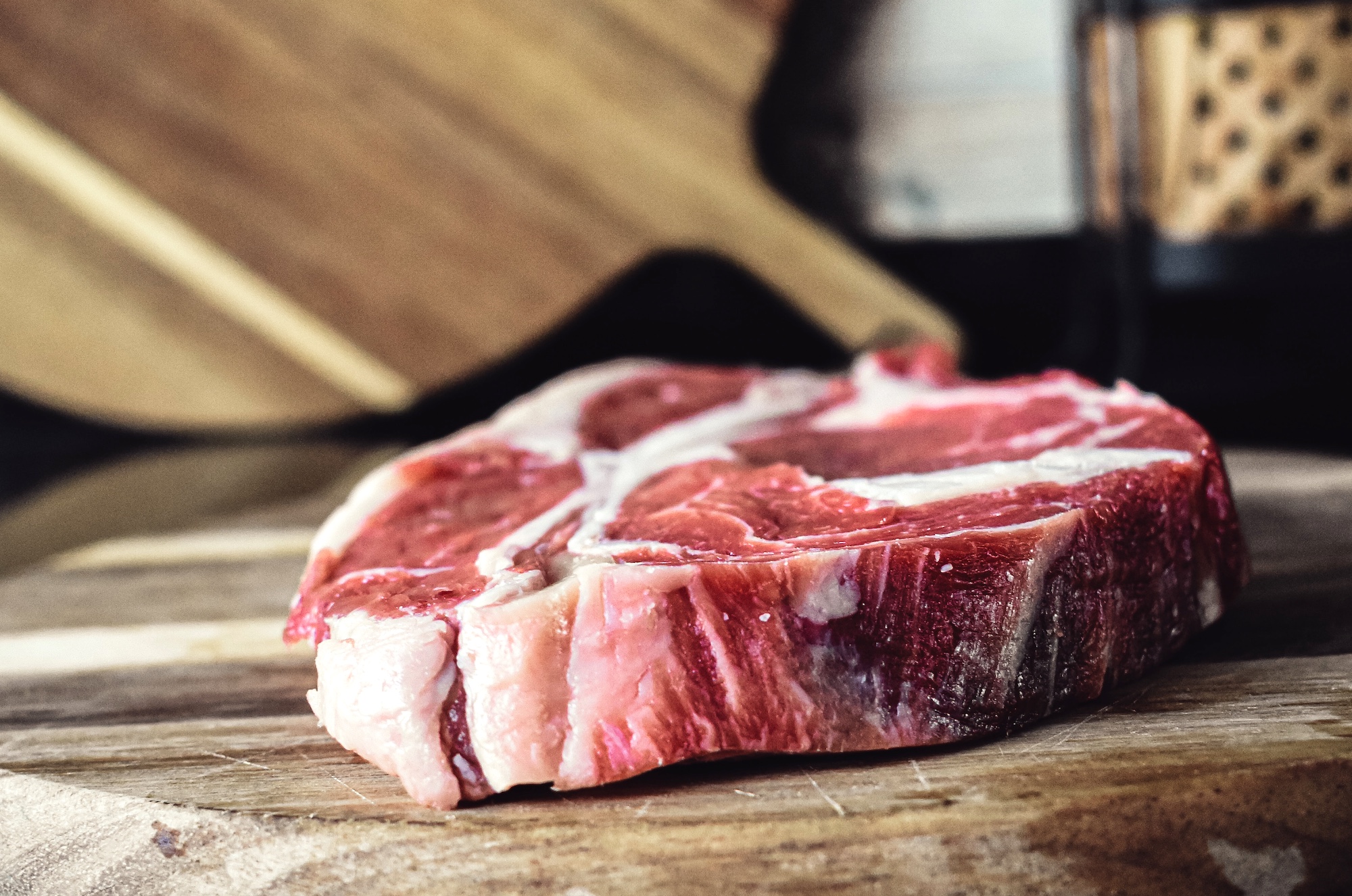I tried to remember some of the dishes I ate during my last visit to Spain in September 2019, six months before the world came to a standstill, to evoke the feelings I felt back then:
My first taste of arepas in Madrid’s La Latina neighborhood; cochinillo asado with a side of sopa Castellana at Restaurante La Codorniz just off the aqueducts of Segovia; eclectic pinchos in Bilbao’s Mercado de la Ribera; and then tortilla de patatas with gulas after a long day out.
I also recall devouring homemade bocadillos lovingly and generously filled with jamón and queso for the Renfe ride back to Madrid; and an authentic lunch spread from a beautiful village in Cantabria that’s quite possibly the true star of the trip—pulpo a la gallega, ensaladilla, embutidos variados (chorizo, cheese, jamón), an ensalada topped with queso de Burgos, and pan blanco from the local panaderia.
And I almost forgot the juicy moras picked on the side of the road after cycling in the hilly Cantabrian countryside.
This is the stuff of delicious dreams.
“Spain has ranked among the top 10 suppliers of beef in the Philippines and likewise has constantly ranked as the number one supplier of pork in the Philippines, contributing to almost 30 percent of the total pork supply for the last five years,” says Paul Limson, director of Bureau of Animal Industry.
And yet this was also the same feeling afforded to me that night at the residence of the Spanish ambassador to the Philippines, Miguel Utray Delgado, where the world-famous Spanish beef was taking the bull by the horns (in the most festive way possible, of course) as a prized product staking its claim on the local market since the upsurge it experienced in the last three years.

“Spain has ranked among the top 10 suppliers of beef in the Philippines (with figures exceeding 5,000 tn/year since 2020) and likewise has constantly ranked as the number one supplier of pork in the Philippines, contributing to almost 30 percent of the total pork supply for the last five years,” says Paul Limson, director of Bureau of Animal Industry.
This event was in line with the participation of Provacuno—a private, nonprofit agro-food inter-professional organization of the Spanish beef industry—as an exhibitor at the recent 23rd World Food Expo Manila.
Spanish beef really is a cut above the rest
Now more than ever, it’s easier to sink your teeth into Spanish beef—what with the proliferation and longevity of restaurants such as Terraza Martinez, La Picara, and Pablo Bistro, and of course the plethora of Chele Gonzalez concepts in and outside Manila.
Since the floodgates opened in 2020, the Philippines has become one of the main buyers of Spanish beef for reasons that cover a unique spectrum—from food safety, variety, and versatility to a feeding system that prioritizes a diet of grains and oilseeds, and most especially the strict compliance with the European Production Model—which upholds animal health regulations, welfare, sustainability, and traceability—that give more insight into Spanish beef’s success locally.

“The trade of meat between the Philippines and Spain plays a crucial role in the livestock industry and economy of the Philippines. It is an essential aspect of both countries’ agricultural sectors,” says Limson. “Spain, known for its quality livestock, has been a reliable source of not only pork but also beef to the Philippines, contributing to the country’s growing demand for meat consumption.”
Globally, the sector is faring fairly well, too. Spain is the fifth largest producer in the European Union and the 18th largest worldwide while in terms of export, the country ranks 14th internationally with figures estimated at 222,000 tn/year based on 2019 Trade Map figures.
Globally, the sector is faring fairly well, too. Spain is the fifth largest producer in the European Union and the 18th largest worldwide while in terms of export, the country ranks 14th internationally with figures estimated at 222,000 tn/year based on 2019 Trade Map figures.
While the numbers are triumphant, the joyous cocktail event itself painted this picture in broad strokes courtesy of Fernando del Cerro, chef of the Michelin-starred, family-run restaurant Casa José in Aranjuez.
While primarily known for his work with seasonal vegetables and their “certain strength” —thanks to their location that “used to be the leading vegetable garden of the Renaissance in 16th century Europe”—Del Cerro’s deft and creative hands utilized Spanish beef to great aplomb. His crowning glory at the event’s show cooking demonstration was a slab of tenderloin roasted in carbon salt similar to a salt-baked fish.
“If there’s something special you can say about the meat produced in Spain, it’s the versatility,” says del Cerro.

Alongside the sliced morsels of juicy Spanish beef minimally topped with earthy sauces, there was also an abundance of tapas from La Picara’s Isabel Calvo and flowing wines like Habla de La Tierra from Extremadura.
A cocktail like this is everything an event about food should be. Celebratory and creative. A cradling of time, people, place, and memories that makes the focal point that much larger than itself.
At that moment, I couldn’t be happier to think that I was back in sunny Spain, holding a glass of reserva and looking to tuck into the solomillo cooked to perfection right in front of me.





